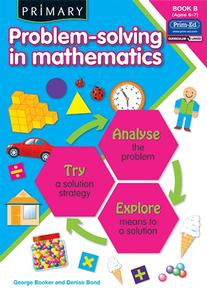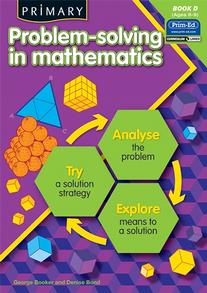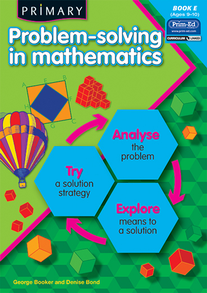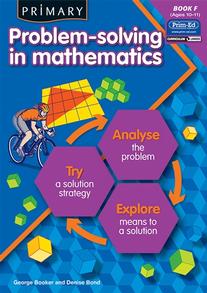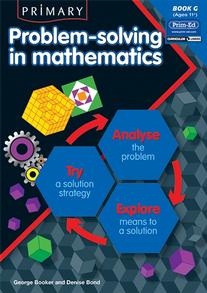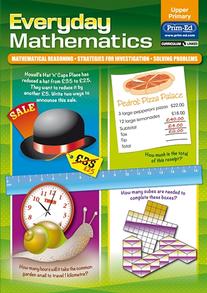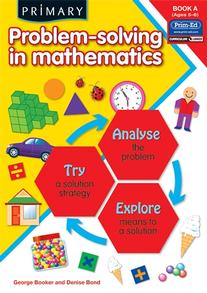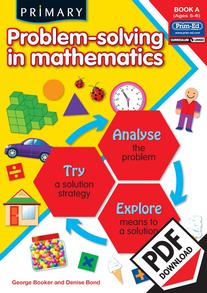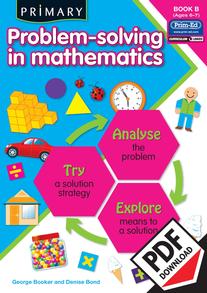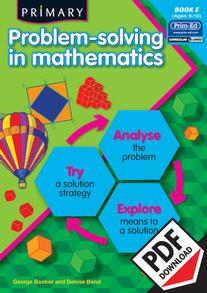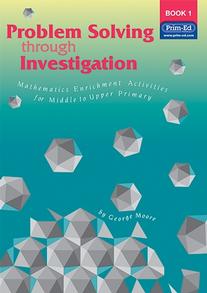-
0
Your cart is currently empty.
-
0
Your cart is currently empty.
Problem-Solving Worksheets and Resources
Problem-solving is a fundamental part of education, especially in mathematics. To use maths in real-life situations, pupils need to learn how to solve problems effectively. Problem-solving is about developing new skills by engaging with unfamiliar situations. When children are taught how to solve problems, they can make discoveries and understand mathematics on their own terms. Problem-solving is about seeking solutions, exploring patterns and learning to appreciate the beauty and power of numbers.
Let's learn exactly what problem-solving is and how to help your pupils develop their problem-solving skills. We'll review problem-solving resources in and out of the classroom and answer common questions to help your pupils move forward.
What is problem-solving?
The term 'problem solving' always comes up in mathematics, but it's not always clearly defined. In a general sense, it refers to mathematical tasks that are designed to provide intellectual challenges and enhance understanding. While 'problems' have always been central to maths education, the act of problem-solving is only just starting to get the attention it deserves.
In a typical problem-solving scenario, pupils are asked to explore ideas and find solutions to a novel problem. They will test, present or discuss solution strategies and work to understand the wider concept and how it relates to the mathematics curriculum.
Problem-solving in maths is about investigating scenarios and making choices based on the information at hand. It involves a cyclic process with three stages: analyse the problem, explore the means to a solution and try a solution or strategy. This process may involve formulas, models, interpretations or even guesswork.
Problem-solving is also about effective communication, with pupils learning to discover solutions through questions, discussions and collaboration. Instead of simply memorising multiplication, subtraction and division problems and data, problem-solving allows pupils to find real, meaningful solutions.
Why is it important to learn to problem-solve?
Problem-solving is an essential skill for any budding mathematician. While presenting pupils with mathematical problems helps them to practise a specific technique, teaching them problem-solving strategies allows them to develop an entirely new skill set. It's about internalising mathematical knowledge so children feel more comfortable in novel terrain.
Problem-solving skills help pupils think outside the box and develop working solutions, even when information and variables are changed. It's about developing a mathematical toolkit and learning how and when to apply different strategies.
Problem-solving resources
Practical worksheets and other resources are a great way to learn problem-solving. When tasks are set and repeated with variations, pupils develop a real understanding of the material. The act of problem-solving is not limited to a specific field of maths and it is not defined by a particular type of reasoning. It can be applied in any mathematical discipline, from simple number and multiplication word problems to algebra, geometry, statistics and more.
The following subjects can be taught through problem-solving:
- Maths homework tasks
- Multiplication problems
- Division word problems
- Subtraction word problems
- Fractions
- Maths games
- Measurement and geometry
- Mental maths
- Number and algebra
- Maths references
- Statistics and chance
Products to teach problem-solving
To solve maths problems, it's important to use a variety of techniques and resources. Various tools are available inside and outside the classroom and different levels are available for children of all ages. From Problem-solving Strategies and Skills Maths Cards and worksheets to posters, books and lesson plans, problem-solving is best approached from several angles.
The following product types include problem-solving resources:
- Digital resources
- eBooks
- Editable pupil worksheets
- Lesson plans and units
- Boxed resources
- Full-colour books
- Photocopiable books
- Posters
- Pupil workbooks
- Reference material
Problem-solving resources from Prim-Ed Publishing
At Prim-Ed Publishing, we are heavily invested in education. We understand the importance of problem-solving and have produced numerous resources to teach problem-solving skills. Our primary teaching resources are colourful, creative and engaging for pupils of all ages.
Our product line includes the popular Problem Solving Through Investigation series, which includes three books full of enriching activities. Prim-Ed books and resources teach problem-solving through activity, with problems reviewed, solutions explored and ideas tested in an ongoing fashion. This novel approach has been designed to inspire learning.
Pupils don't just memorise facts and figures; they discover how maths works from the inside out. This offers numerous benefits, with young learners feeling more engaged, more confident and much better equipped to solve real-life maths problems. At Prim-Ed Publishing, we help your children to thrive through knowledge.
Teaching maths skills in the classroom
Quality resources make all the difference if you're a primary school teacher. At Prim-Ed Publishing, we provide maths problem-solving worksheets, books and resources for classroom lessons. Our maths products, including teacher resources, strategies, methods, and practice activities, are ideal for school environments. When problem-solving maths worksheets are used at school and home, pupils develop a comprehensive understanding of maths concepts.
If you're looking for proven mathematics resources, Prim-Ed Publishing has everything you need. Please review our products, read our blog or contact our team to learn more.
Frequently asked questions
What is problem-solving in maths?
Maths problem-solving is about setting specific tasks to enhance understanding. Instead of simply memorising procedures and formulas, problem-solving teaches pupils the fundamentals of maths through mental activity. Many of our problem-solving resources involve a cyclic process with three stages: analyse the problem, explore means to a solution and try a solution or strategy. Depending on the age level, the field of math, and the specific problem, this may involve formulas, models, interpretations and guesswork.
Why is problem-solving important?
Solving problems is an essential skill for mathematicians of any age. It helps to link creativity with reasoning and gives pupils a more intuitive understanding of numbers. While presenting problems helps children to practise a specific technique, teaching them problem-solving allows them to learn new skills and develop real confidence. When pupils develop problem-solving skills, they can think outside the box and find meaningful solutions in novel situations.
How can problem-solving worksheets support the curriculum?
Problem-solving worksheets and other resources support the maths curriculum. In a normal situation, pupils are asked to explore ideas and find solutions to a novel problem. Whether this happens in the classroom or with take-home maths cards, pupils learn to apply their existing knowledge to solve real problems. Various solutions and strategies are tested or discussed, with pupils developing a real understanding of the problem and how it relates to the wider mathematics curriculum.
